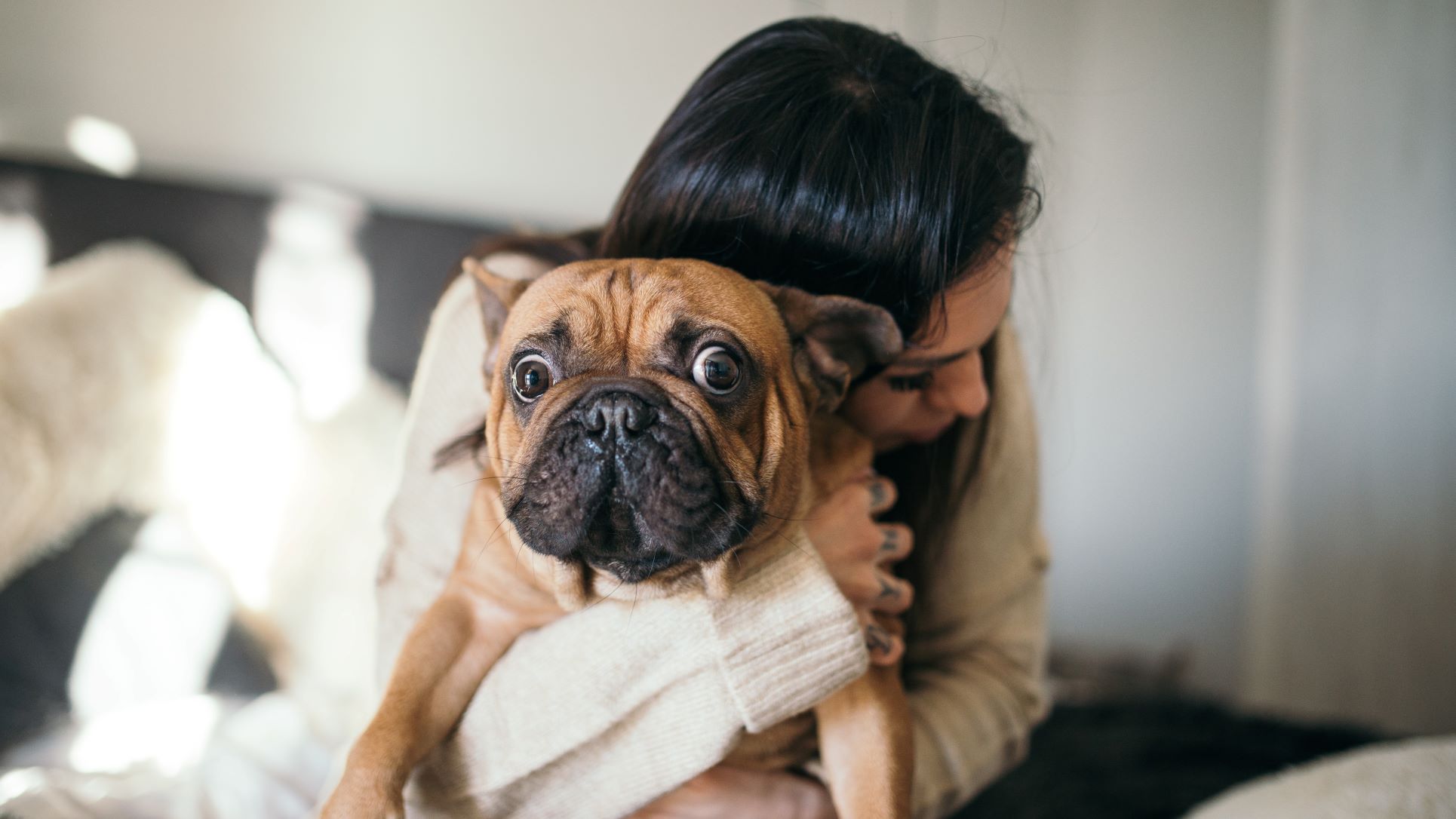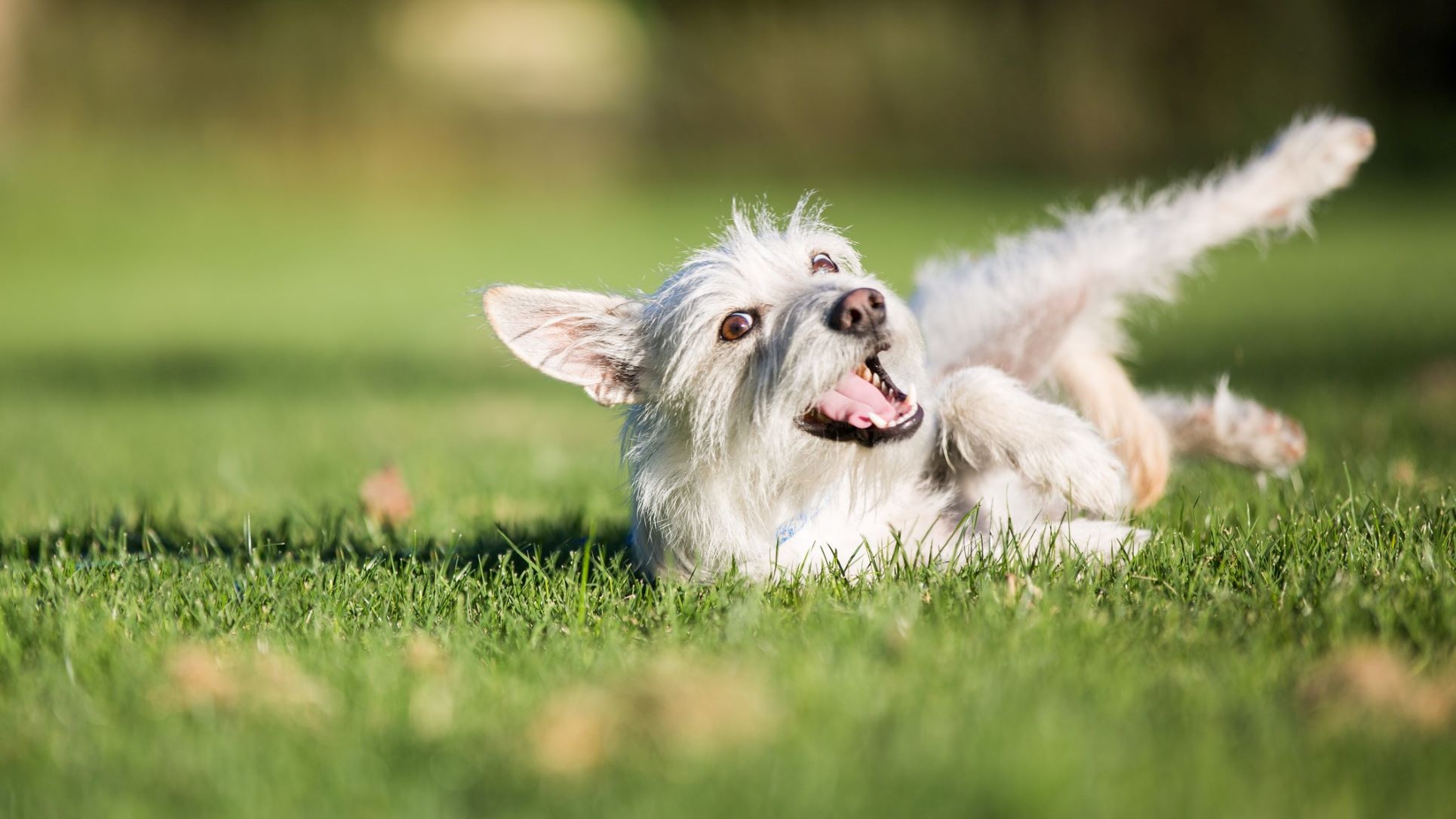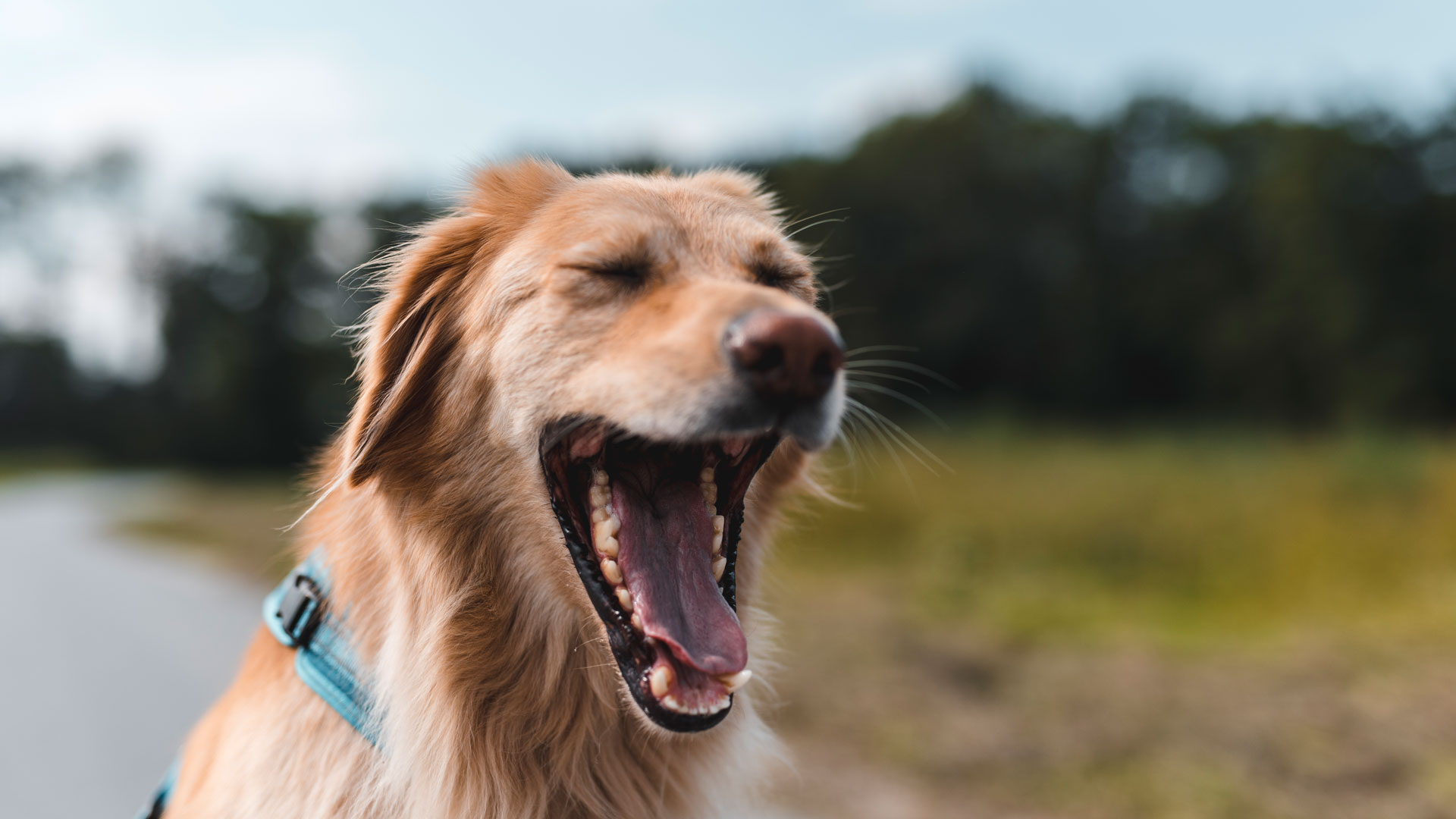I learned these five dog body language cues and they changed my relationship with my dog
Our dogs might not be able to talk, but they’re constantly communicating with us – we just need to speak their language

If you’ve ever watched Dr. Doolittle and wondered what it would be like if your dog was able to talk, I’ve got good news for you. Our dogs are great communicators – we’re just usually not very good at being able to understand what they’re saying. Ever since I picked up my border collie Fenwick as a puppy, I’ve been absolutely fascinated by dog body language and how much of it goes overlooked and unintentionally ignored by us humans.
Through talking with Fenwick’s own trainer and watching countless TikTok videos breaking down dog body language, I feel that I’ve managed to grasp a reasonable understanding. This knowledge has been incredibly useful for me, as Fenwick is a very sensitive dog that can often have ‘big feelings’ about things I wouldn’t ordinarily think twice about. Next to finding the best dog treats to motivate Fenwick, an understanding of dog body language has been one of the most useful tools in my training arsenal.
I asked my trainer Lara Sorisi, an APDT-certified dog trainer and a championship dog trainer, why understanding dog body language can be helpful. “Over the course of my career as a dog trainer, so many people have said to me, ‘I wish I knew what my dog was thinking’. However, if you have an understanding of dog body language, you soon realize that dogs are so obvious with what they’re thinking. Being able to understand them is truly invaluable, as you’ll be able to foresee the outcome of any tricky situations much quicker.
“I find understanding dog body language is particularly useful for anxious or reactive dogs, or for dogs that can be excited and over-aroused. It can help you manage a situation such as a training scenario or a walk, as you’ll be able to tell whether they’re happy, frustrated, over-tired, etc. This will help you better manage the situation to help your dog feel safe and cope better.”
Below, I’ve rounded up the top five dog body language cues that I’ve learned that have helped me better understand my dog. However, it’s really important to note that dog body language is incredibly dependent on context. One particular behavior can mean multiple things, depending on what the rest of the dog’s body is doing. It can also depend on the dog too, so Fenwick’s body language might mean something totally different than another dog that’s doing something very similar.

Lara Sorisi is a science-based and force-free dog trainer that has been training dogs for six years. She is accredited by the APDT (Association of Pet Dog Trainers), which is one of the most rigorous dog training qualifications available. Lara holds a bronze-level qualification with UK Sniffer Dogs, which means that she is an accredited UK Sniffer Dogs instructor. She’s also formally competed in gundog trials for three years. In 2021, two of her dogs became field trial winners. Meanwhile, in 2022 she qualified for the Kennel Club 92nd Championship Field Trial for Cocker Spaniels. In addition to her own competing accomplishments, she’s also produced three award-winning dogs for other competitors as well.
1. A high flagging tail & pricked ears
Whether she’s spotted a dog in the far distance with her crazy-good border collie eyesight, or she’s heard someone walk down the path outside my house with her equally impressive hearing, I know that Fenwick is on alert when I see her tail curled high and her ears pricked forwards.
I’ve come to learn that this doesn’t necessarily mean that Fenwick feels negatively about what’s going on – she’s just communicating that she’s noticed something that she feels is worth paying attention to.
Get the best advice, tips and top tech for your beloved Pets
Being able to recognize that Fenwick is on alert is a really great warning for me, as I’m able to prepare myself in case she does start to react negatively after that point. For example, if the off-lead dog in the far distance starts to move towards us, then I know that Fenwick will become unnerved by this and will fixate on the approaching dog. Being pre-warned means that I can intervene as early as possible to try to break her fixation, making my chances of success much higher.
2. Rolling and showing her belly during greetings
Ever since she was a puppy, Fenwick has had a habit of rolling over and showing her belly during greetings with humans. I initially thought that it was a cute way of inviting pets, but I subsequently learned that it can also be a way for dogs who are feeling nervous to communicate that they’re not a threat. It can be really difficult to be able to tell the difference between the two causes of this behavior – which is especially frustrating when they elicit two polar opposite reactions.
I’ll be honest – I still struggle to recognize whether Fenwick is asking for pets or rolling over in submission. However, taking Fenwick’s general nervous disposition into consideration, I’ve come to the conclusion that it’s likely that she’s being nervous. To help combat this, I’ve asked anyone who’s greeting Fenwick to give her plenty of space if she rolls onto her back.

3. Lip-licking and yawning during interactions
As I became more aware of dog body language, I also started to realize that Fenwick wasn’t necessarily comfortable or happy with some of the interactions that she was having with me and my partner. It’s really important to remember that, like humans, dogs can tolerate things that they don’t particularly like. So, they won’t always move away from us if they don’t want to be touched – but that doesn’t mean that they actually want you petting them.
While Fenwick is usually a little cuddle-bug that loves snuggling on the sofa with me, there are times when she doesn’t actually want to be stroked. If I pet her when she doesn’t want me to, she’ll often lick her lips and yawn. These are two common indications of stress and are her way of saying ‘please don’t do that’ in a polite way.
Fenwick’s yawns are also a great example of how a behavior’s meaning can totally differ depending on the context. While her silent yawns are a stress indicator, if myself or my partner are busy doing something else and she wants attention, she’ll often give a loud, pointed yawn so that we make a fuss of her (it’s absolutely adorable, so it works spectacularly well).

4. Ducking her head
Ducking the head is a behavior that’s quite common amongst herding breeds – and it’s become a really useful way for me to be able to discern whether Fenwick is watching something with neutrality, or whether she’s becoming fixated on it.
Fenwick is a very sensitive dog that wasn’t able to be properly socialised when she was a puppy, due to being very ill with a severe chicken allergy that went undiagnosed for several months. Combined with a high prey drive, this means that she can struggle with seeing dogs, cars, and people when she’s outside. Over the past year, my main training focus has been trying to get her to be able to focus on me rather than distractions – and being able to tell whether Fenwick is looking at something in a healthy or unhealthy way is really useful.
For example, if Fenwick’s high, curled tail and pricked ears turn into her beginning to duck her head down (maintaining a hard eye contact with the object that she’s looking at), then I know that she’s starting to fixate. Alternatively, if her tail starts to soften into a loose tail wag and she is able to look back at me intermittently, then I know that she’s simply happy and excited.
5. A relaxed vs unrelaxed lying down
If I was given the ability to snap my fingers and instantly change one thing about Fenwick, it would be her inability to see another dog within 25–50 meters without lying down and trying to herd it. I’m not joking when I say that there have been times when I could have waved a steak in front of her face and she wouldn’t have cared – she was that fixated. This has been an incredibly frustrating and challenging behavior, especially because she usually won’t move until the other dog has disappeared.
Combatting this behavior has been a long, trying process. I’m seeing some amazing results working with Fenwick’s dog trainer, but we’ve still got lots left to do. However, part of the training we’re doing is letting Fenwick observe other dogs in a safe environment (such as in the boot of my car).
With this training, it’s really crucial that I’m able to understand the difference between Fenwick lying down to fixate on a dog, versus lying down in a relaxed position and simply observing what’s going on around her. However, as I’m sure you can appreciate, this is easier said than done! I’m now at the point where I feel I can confidently interpret the differences about 90% of the time – for example, a relaxed position will have Fenwick’s hips shifted so that her legs are out to the side, whereas a fixated lie down will have all four paws on the ground, ready to spring into action if needed.
If Fenwick is relaxed, I can let her continue to watch without interference. But, if she’s fixating, then I can intervene and use some of the management techniques I’ve learned to break that fixation.
While I’m by no means an expert, learning more about Fenwick’s body language has given me an incredible insight into her own thoughts and feelings. If you want to learn more about dog body language yourself, I’d recommend seeking out an APDT-certified dog trainer that can help you interpret and understand exactly what your dog is communicating with you.
Looking for more? Here's how I trained my border collie to have perfect recall - even though she had no food drive.
Louise Carey is a freelance writer and the Editor of sister website Top Ten Reviews. She has been working in publishing for seven years, contributing to publications including The Independent, TechRadar, Digital Camera World and more. As the proud pet parent of a reactive border collie with a food allergy, it’s been necessary for Louise to explore a variety of fun and exciting ways to enrich an energetic dog that can’t always go on walks. She’s passionate about sharing the information she’s learned to help other pet owners as well.

